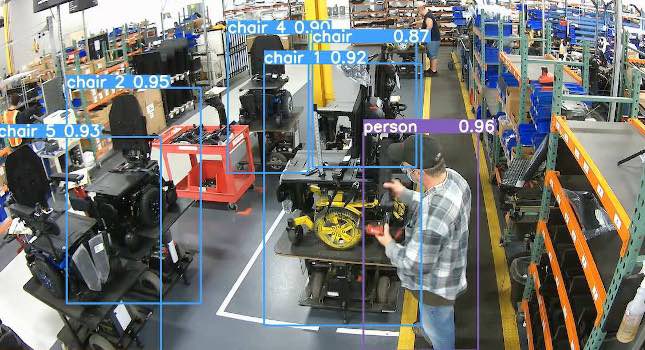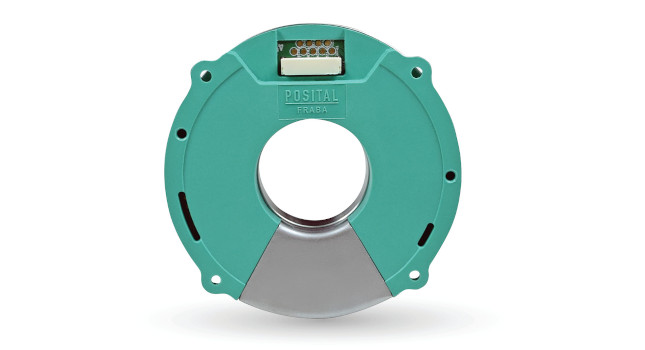Key concepts Cavities in the pump gently move many types of fluids and solids without disturbance. Elastomeric stators provide good sealing and resist abrasion.
Key concepts&/HEADLINE>
Cavities in the pump gently move many types of fluids and solids without disturbance.
Elastomeric stators provide good sealing and resist abrasion.
Dry running is the most common cause of pump failure.
A progressive cavity pump moves most any fluid, even one that includes delicate or abrasive pieces more than 4 in. in diameter, without damage to the inclusions or the pump. How does it do that?
The progressive cavity pump was developed and patented by Dr. Rene Moineau in France more than 70-yr ago. The interaction of a single-threaded, helical rotor rolling eccentrically within a solid, helical stator, internally double-threaded with double the rotor pitch length, produces a series of cavities, 180-deg apart, progressing from inlet to outlet. The cavities follow each other and produce a pulsation-free, positive displacement flow without the need for valves (Fig. 1). This basic configuration is called a 1:2 profile.
Progressive cavity pumps with other profiles, from 2:3 up to 9:10 are possible. The 2:3 profile can either increase flow by 150% at the same speed or reduce speed and wear while still maintaining the original flow.
A second patent used an elastomeric stator to achieve a compression fit with the rotor, eliminating any clearance requirements. The effect was high volumetric efficiencies with fluids of high and low viscosities, as well as abrasion resistance superior to all other positive displacement pumps.
The displacement of a progressive cavity pump depends on three design features:
Rotor diameter
Rotor eccentricity
Stator pitch.
The pump’s pressure rating depends on the number of stages. By repeating the identical, single-helical con-figuration, increasing the length of the stator and rotor increases the number of stages (Fig. 2).
Flow through the elements is not far removed from the straightest distance between suction and discharge. The result is relatively low velocity and shear for a given displacement and excellent capabilities for handling highly viscous and sensitive slurries. A good example is the ability to pump oil and water mixtures without emulsification.
Another feature that gives this pumping principle its advantage for slurry handling is the use of elastomers as the stator. Since the clearance between the elements is eliminated, the pump is capable of pumping low-viscosity and gaseous fluids as well as high-viscosity fluids.
The elastomeric stator adds abrasion resistance beyond that of conventional rotary pumps. Particles tend to imbed rather than abrade. It also allows deformation to partially accommodate large solids, such as rocks, rags, and tramp metal.
Almost every conceivable fluid-like material can be pumped, including sandy crude oil, coal slurries, waste sludge, polymers, grease, tallow, sealant, asphalt emulsions, paper stock, refractory mortar, gypsum roof deck, and caulking compound.
Drive components
In a progressive cavity pump, the rotor rolls in an eccentric path opposite the direction of rotation. Torque from the inline drive shaft must be transmitted through universal joints, flexible shafting, or flexible stator mounts. Improper drive designs result in low operating efficiencies, seal leakage, increased stator wear, and short pump operating life.
Types of eccentric drives
Ball and pin-type universal joint is the earliest design and widely used today (Fig. 3). It is a low-friction device that runs without lubrication and is easy to maintain. Compared to other types, it is the least expensive and used for lighter duties. It can be sealed to prevent abrasive and corrosive wear.
Geared universal joints are rugged and reliable (Fig. 4). The universal joint is almost totally encapsulated in a heavy metal shell that protects the elastomeric seal.
It has multiple gear tooth contact, as opposed to the single line contact of the ball and pin joint design. Lubrication and seal design are critical. Maintenance is difficult but infrequent.
Flex shafts are a simple design. The shaft must be extremely uniform in diameter, smooth over its full length, and terminated in a radiused, rigid connection. The pump must be operated at or below design conditions, or the shaft ends up as a large corkscrew. One of the disadvantages of a flexible shaft is that it makes a long pump longer.
Flexible shafting in the form of rubber covered wire cable and reinforced hose has been used for light-duty, unidirectional applications. The cables and hose are usually in tension and the lay of the cable must be tightened, not unwound, by the direction of rotation.
Types of joints
Cardan universal joints allow for great angularity, thus reducing the length of connecting rods and eliminating the need for hollow tubes (Fig. 5). The joint is simple, inexpensive, rugged, accessible, and easy to service. Lubrication and sealing are critical. This style joint can be used with any fluid.
Rubber universal joints are used where the pumped fluid removes lubrication and embrittles the hardened metal parts used in mechanical joints.
Oldham or sliding block couplings replace two universal joints. This action, while saving space, means the sealing device goes through extreme flexing, shortening its life. It is best to use this coupling with fluids that lubricate.
Maintenance
Progressive cavity pumps are designed for a minimum of maintenance, which usually includes routine lubrication and packing adjustment. If mechanical seals are used, cooling/flushing water flow should be checked. The pump is one of the easiest to work on. The main elements are very accessible and require few tools to disassemble and reassemble on-site.
During the last 25 yr, there has been a trend towards the use of smaller diameter rotors and longer sealing lines in an attempt to reduce wear and improve pump efficiency. Some manufacturers have changed to this geometry, producing rotor/stator designs that maintain pump capacities and pressure capabilities while reducing the rotor eccentricity sliding velocity and increasing the length of the sealing line, providing a more “straightline” flow through the pump.
Thrust loads on the universal joints and bearings are reduced due to the smaller rotor cross-section and smaller eccentricity (Fig. 6). Flow rates are identical at the same speed, since the longer pitch compensates for the smaller rotor eccentricity and diameter.
In comparison to large rotor/stator configurations, the smaller rotor diameter has a sliding velocity about 20% lower, which has an impact on the longevity of the rotor and stator, which are the main wearing items. The longer sealing line tends to improve volumetric efficiency, particularly in the lower speed and upper pressure ranges.
Since thrust load is a direct function of system pressure acting against the rotor cross-section, the older design transmits about 50% more thrust load on universal joints and bearings.
Rotors
Smooth rotor surfaces increase life, reduce starting and running torque, improve performance, and provide smooth operation.
For applications with abrasive fluids, chromium surface coatings can be applied. Modern methods include an electrolytic procedure that produces fissure-free, nonporous coatings that fuse deep into the base metal so it cannot lift or peel, a common fault with standard chrome plating.
Stators
Progressive cavity pump stators are usually molded to size for a custom fit. Some stators are molded in long tubes and cut to length. Other forms of stators are a two-part design. The casing is generally made of steel and the elastomer, with seals at both ends, vulcanized to it. The inner shape of the elastomer comes from a metal core placed in the center of the casing before vulcanizing. Stators of this type usually have tighter dimensions at the ends.
A wide variety of elastomers are necessary to meet application demands: natural rubber of various hardnesses and abrasion resistant qualities, synthetic rubbers of various compositions, plastics such as PTFE, filled PTFE, nylon, polypropylene, high molecular polyethylene polyacetal, and fabric-based laminates.
Protection
Destruction of the pump stator by dry running occurs when loss of lubrication of the pumped fluid causes excess friction and temperature on the surface of the stator. It is the most common cause of pump failure.
Common methods of preventing dry running conditions are presence/ absence sensors, stator temperature probes, and nonintrusive pressure sensors.
Presence/absence sensors protect pumps by detecting the absence of liquid flowing into the suction port. If supply fluid is not detected for a preset period of time, the system deactivates the pump motor starter or other critical process equipment. This sensor is reliable protection against dry running because it can stop the pump before dry running occurs (Fig. 7).
Stator temperature probes have a thermistor sensor and sleeve inserted into the stator to measure the temperature between the rotor and stator. An electronic temperature regulator deactivates the motor starter when a preset temperature is reached. On abrasive applications, a few minutes of running dry results in accelerated wear of the stator. Tests have shown that a rotor and stator can run dry for several minutes before an increase in heat is detected.
Nonintrusive pressure sensors at the pump outlet are an effective way to prevent dry running. Pressure detection over the entire pipe circumference ensures that coatings, settled material, or bridging does not affect pressure readings. As an added feature, a liquid-filled gauge allows visual monitoring of pressure.
Not only does a pressure sensor protect a pump from running dry, it also prevents failure caused by high pressure.
Plant Engineering magazine extends its appreciation to Bornemann Pumps, Inc., and Moyno, Inc. for their assistance in the preparation of this article. The cover picture was taken with the cooperation of Shanley Pump & Equipment, Inc.
&HEADLINE>More info&/HEADLINE>
Joe Foszcz may be reached at 630-320-7135; [email protected].
For additional material on related topics, see the “Fluid handling” channel on Plant Engineering Online: www.plantengineering.com.
&HEADLINE>Examples of pumped product&/HEADLINE>
Adhesive with titanium dioxide
Animal feed
Apricots, raw, sliced
Baby food
Bentonite mixture with water, sand,
and coal dust
Bleach, chromate based
Brewery sludge
Cast resin
Ceramic waste slurry
Cherry juice with whole cherries
Chocolate masses
Clay sludge
Coconut masses
Cream
Egg whites
Filter cake from vacuum filters
Fish, whole and pieces
Fruit mashes, dejuiced/rape
Fuel with coal dust
Grain mashes
Grease-water mixtures
Gypsum slurry
Hand cleanser
Knifing filler
Latex sludge
Lime sulfate with gypsum
Magnesium hydroxide paste
Malt grains
Meat/bone mixtures
Methyl cellulose pulp
Mine sludge, thick
Molasses
Mortar
Mud sludge
Nickel hydroxide sludge
Noodle dough
Nougat
Paint paste
Paper stock
Peat slurry
Petroleum residue slurry
Phosphate slurry
Plant extracts
Plastisol pastes, up to
1,000,000 cps
Potato pulp
Rape mashes with oil
Sewage sludge, dewatered
Sludge from dust scrubbers
Sludge from sugar factories
Slurry with butanol
Soft soap
Spinach puree
Starch
Sugar beets
Sulfur sludge
Titanium dioxide
Tooth paste
Vegetables
Stator material properties
MaterialGenerally resistant to:Generally attacked by:Max. allowable temperature, F
Natural rubber
Most moderate chemicals, wet or dry organic acids, alcohols, ketones, aldehydes
Ozone, strong acids,fats, oils, greases, most hydrocarbons
185
Nitrile synthetic rubber
Many hydrocarbons ,fats, oils, greases
Ozone, strong acids, ketones, esters, aldehydes, chlorinated and nitro hydrocarbons
212
EPDM
Animal and vegetable fats, oils, greases, ozone, strong and oxidizing chemicals
Petroleum solvents, coal tar, solvents, aromatic hydrocarbons
260
Fluoroelastomers
All aliphatic, aromatic, and halogenated hydrocarbons
Ketones, low molecular weight esters and nitro containing compounds
428
&HEADLINE>Pump selection steps&/HEADLINE>
Decide on the materials of construction, which must be compatible with the fluid being pumped.
Size the pumping element based on capacity required and fluid viscosity.
Choose the operating speed, which is determined by abrasion and viscosity of the pumped fluid.
Determine the number of element stages, which is based on fluid abrasiveness and pressure required.
Know particle size in the fluid because it affects the element choice.
Select prime mover power (in kW) from tables.
Calculate minimum kW requirement based on operating temperature, solids content, and suction requirements.
&HEADLINE>Progressive cavity pump manufacturers&/HEADLINE>
The following companies provided input for this article by responding to a written request from Plant Engineering magazine.
For more information on their product lines, circle the number on the reader service card or visit their web site.
Progressive cavity pump manufacturers
CircleCompanyFlow, gpmHPStagesMax. pressure, psiMax. temperature, FSTATOR RigidSTATOR ElastomerMax. hard particle dia., in.
&READERSERVICE>221 &/READERSERVICE>
Blackmer Claremore www.blackmer.com
& lt;1/1025
1/4/150
9
760
400
—
x
1.8
&READERSERVICE>222 &/READERSERVICE>
Bornemann Pumps, Inc. www.bornemannpumps.com
0.25/1200
1/75
10
1160
350
—
x
3.15
&READERSERVICE>223 &/READERSERVICE>
Continental Pump Co. www.continentalultrapumps.com
0.5/300
1/2/40
6
450
310
x
x
1
&READERSERVICE>224 &/READERSERVICE>
Monoflo, Inc. www.monoflo.com
0/1900
1/8/200
12
1100
300
x
x
4.125
&READERSERVICE>225 &/READERSERVICE>
Moyno, Inc. www.tdh-marketing.com
0.02/4000
0/250
24
2100
400
x
x
2.8
&READERSERVICE>226 &/READERSERVICE>
Netzsch, Inc. www.netzschusa.com
0/2000
0/125
10
1000
300
x
x
2
&READERSERVICE>227 &/READERSERVICE>
Oberdorfer Pumps Corp. www.oberdorfer-pumps.com
3.25/8.5
0.5/0.75
1
100
350
—
x
0.25
&READERSERVICE>228 &/READERSERVICE>
Seepex, Inc. www.seepex.net
0/2500
1/6/250
8
720
400
x
x
4
&READERSERVICE>229 &/READERSERVICE>
Shanley Pump & Equipment, Inc. www.shanleypump.com
0.001/4000
1/8/300
8
800
285
x
x
8



